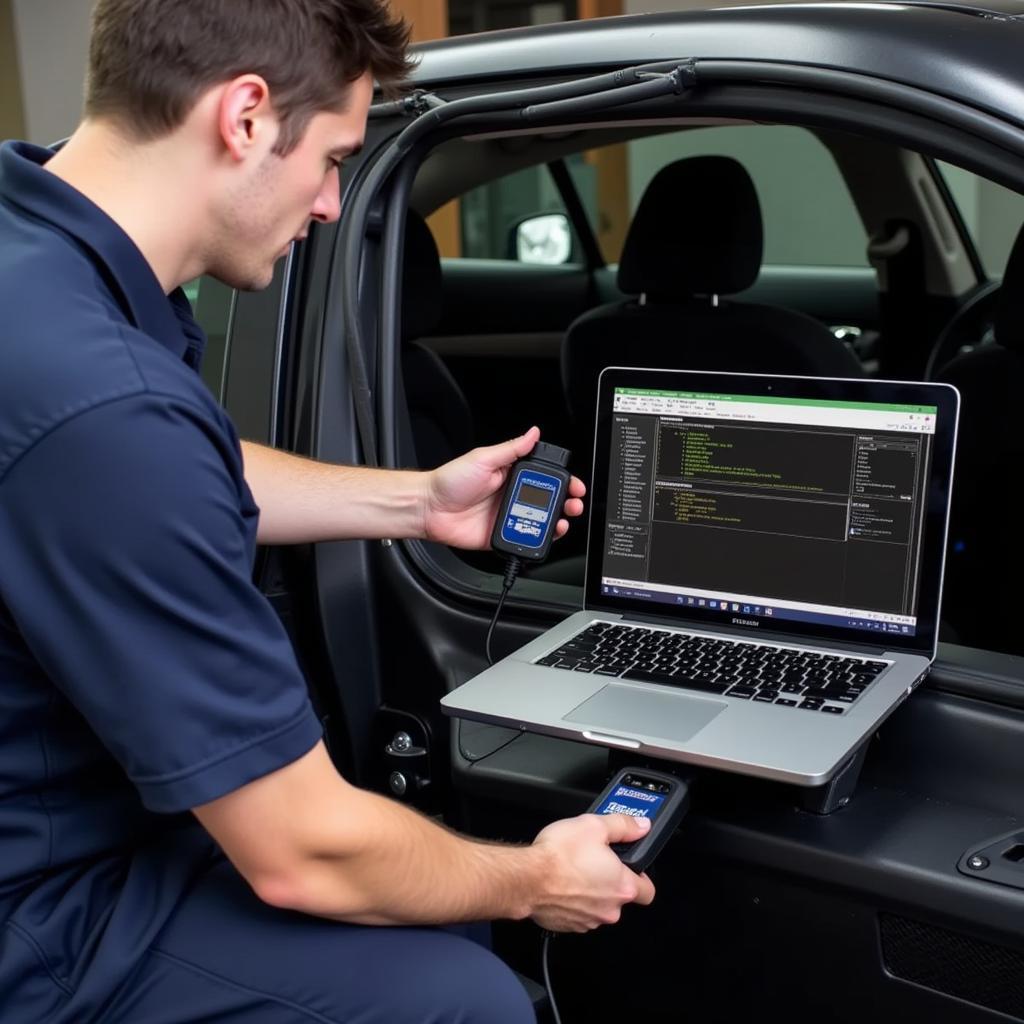The Windows 10 Memory Diagnostic tool automatically running on startup can be alarming, especially with lingering concerns about malware like Wannacry. While the tool itself is benign, its unexpected activation can signal underlying issues, ranging from faulty RAM to more serious software problems. This article delves into the reasons behind this automatic startup, differentiates it from malware activities, and provides comprehensive solutions for resolving the issue and ensuring your system’s health.
Understanding the Windows Memory Diagnostic Tool
The Windows Memory Diagnostic tool is a built-in utility designed to check your computer’s RAM for errors. It typically runs when scheduled or manually initiated. However, if it’s starting up every time you boot your computer, it suggests the system detected a potential memory problem. This is not necessarily cause for panic, but it warrants investigation.
Why is the Windows Memory Diagnostic Tool Automatically Running on Startup?
Several factors can trigger the automatic execution of the memory diagnostic tool:
- Pending memory check: A scheduled memory check might be pending due to a previous unsuccessful attempt or a user-initiated request that wasn’t completed.
- Hardware issues: Faulty RAM modules can cause system instability and trigger the diagnostic tool automatically.
- Software conflicts: Certain software installations or updates can interfere with system processes, leading to the unintended execution of the memory diagnostic tool.
- BIOS/UEFI settings: Incorrect BIOS or UEFI settings related to memory management can also cause this issue.
Differentiating the Memory Diagnostic Tool from Wannacry
It’s crucial to distinguish the legitimate Windows Memory Diagnostic tool from malicious software like Wannacry. Wannacry is a ransomware that encrypts files and demands a ransom for decryption. While a sudden system slowdown might be a symptom of both, there are key differences:
- Interface: The Memory Diagnostic tool displays a blue screen with progress indicators. Wannacry presents a ransom note.
- System behavior: The Memory Diagnostic tool runs a memory test. Wannacry locks access to files.
- Startup trigger: The Memory Diagnostic tool is triggered by system settings or potential hardware issues. Wannacry is activated by malicious code.
Troubleshooting the Automatic Startup of Windows Memory Diagnostic Tool
Here’s a step-by-step guide to resolve the issue:
- Check Task Scheduler: Open Task Scheduler and look for any scheduled tasks related to the Memory Diagnostic tool. Disable or delete any unnecessary or conflicting entries.
- Run the Memory Diagnostic Tool manually: Run a complete memory test to identify any potential errors. If errors are found, replace the faulty RAM module(s).
- Update or reinstall drivers: Outdated or corrupted drivers can cause system instability. Update your chipset and other relevant drivers.
- Check BIOS/UEFI settings: Ensure that your BIOS/UEFI settings related to memory management are correctly configured. Consult your motherboard manual for specific instructions.
- Perform a clean boot: A clean boot helps isolate software conflicts. Disable non-Microsoft services and startup programs to determine if any third-party software is causing the issue.
Preventing Future Occurrences
- Keep your system updated: Regularly install Windows updates and driver updates to ensure system stability.
- Install reliable antivirus and anti-malware software: Protecting your system from malware is crucial for preventing issues like Wannacry and other ransomware attacks.
- Monitor system performance: Regularly check your system’s performance for any unusual activity.
“Regularly running the Windows Memory Diagnostic tool can prevent unexpected issues and ensure optimal system performance,” advises John Smith, Senior Systems Engineer at ScanToolUS. “Early detection of memory problems can save you from data loss and costly repairs.”
Windows 10 Memory Diagnostic Tool Automatically Running on Startup Wannacry: Solutions and Prevention
Addressing the Windows 10 memory diagnostic tool automatically running on startup requires a systematic approach. By understanding the potential causes and differentiating it from malware like Wannacry, you can effectively troubleshoot and resolve the issue. Remember, proactive maintenance and regular system checks are vital for ensuring a healthy and stable computing experience. Contact ScanToolUS at +1 (641) 206-8880 or visit our office at 1615 S Laramie Ave, Cicero, IL 60804, USA for further assistance.
FAQ
- Is the Windows Memory Diagnostic Tool safe? Yes, it’s a built-in Windows utility designed to check for memory errors.
- Can the Memory Diagnostic Tool damage my computer? No, it only tests the RAM and doesn’t modify any data.
- How long does the Memory Diagnostic Tool take to run? It depends on the size of your RAM, but it usually takes a few minutes.
- What should I do if the Memory Diagnostic Tool finds errors? Replace the faulty RAM module(s).
- Can malware disguise itself as the Memory Diagnostic Tool? While unlikely, it’s essential to verify the interface and system behavior to differentiate between the legitimate tool and malware.
- How can I prevent Wannacry infection? Keep your system updated, install reliable antivirus software, and avoid clicking on suspicious links or attachments.
- What should I do if my computer is infected with Wannacry? Disconnect from the network immediately and consult a cybersecurity professional.


